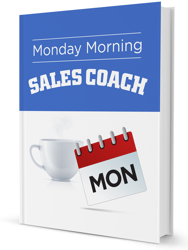Wimping Out
Problem: As trainers, we see this scenario played out time and time again. Salespeople seem to have lost the ability to close!
Diagnosis: Selling, from a technical/skill perspective, has gone through a major transition. Years ago, salespeople were taught what we might call the CHAOS System of Selling, the Close Hard And Often System. Pound away until you get the order, be extremely persistent, manipulate if necessary, and use one of the many canned closes that worked so well back in the 1950’s. (“If I could show you a way, would you buy it today?” is a typical example of an outmoded close.)
The buying public caught on, became much more aware of the sales technique, and quickly learned how to deal with obviously manipulative approaches. Salespeople, who are also buyers, learned to hate these approaches as well. So, except for a few diehards, salespeople backed-off from using many of the old techniques. Sales processes were adapted to take on a more laid back “consultative” approach, at least early in the process. Yet often these consultative approaches concluded with some sort of old style manipulative closes.
When almost everyone realized that manipulation was no longer effective, a 180-degree turn for the worse occurred. Many salespeople stopped trying to close at all. (Witness the often stated complaint of sales managers, “Nobody asks for the order.”) Buyers started to “think it over” more often, the sales cycle got longer and everyone, except the buyer got frustrated. Salespeople made lots of friends, but business was still in the tank. Plain and simple, salespeople were “wimping out”!
Solution: The old selling model is clearly flawed and a new paradigm is needed. The new model is for salespeople to facilitate the buying process. The idea is to let the buyer convince you, the salesperson, that he really needs your product or service. It takes a good meeting agreement, strong qualifying skills, and the ability (and guts) to recognize when someone is not a prospect. Master these skills, change your attitude about hearing “no,” and you’ll be selling more with less effort.


